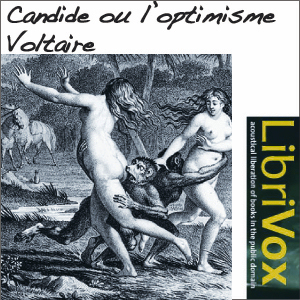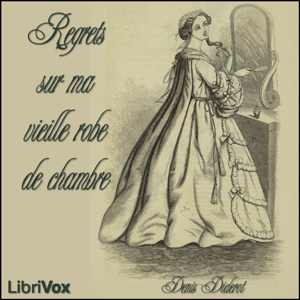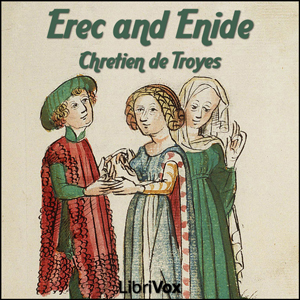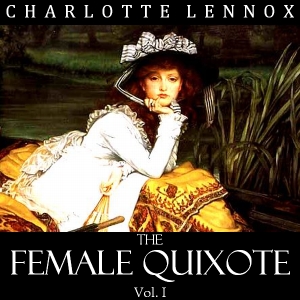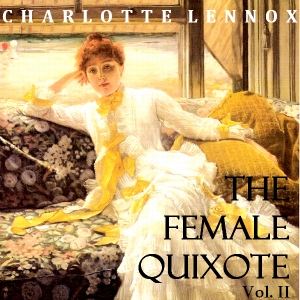
Published in 1766 'The Vicar of Wakefield' was Oliver Goldsmith's only novel. It was thought to have been sold to the publisher for £60 on Oliver Goldsmith's behalf by Dr Johnson to enable Goldsmith to pay off outstanding rent and to release himself from his landlady's arrest.
It is the story of the family of Dr Primrose, a benevolent vicar, and follows them through their fall from fortune and their ultimate rise again. The story provides insight into family life and circumstances in the mid 18th century and the plot has many aspects of a pantomime like quality: Impersonation, deception, an aristocratic villain and the abduction of a beautiful heroine.
Goldsmith himself dissipated his savings on gambling whilst a student at Trinity College Dublin and subsequently travelled in Europe sustaining himself by playing the flute and disputing doctrinal matters in monasteries and universities. Later he worked as an apothecary's assistant, a doctor and a school usher (experiences shared in this story by Dr Primrose's son).
(Summary by Martin Clifton)
32 episodes
This book is all about the fictional country called Utopia. It is a country with an ‘ideal’ form of communism, in which everything really does belong to everybody, everyone does the work they want to, and everyone is alright with that. This country uses gold for chamber pots and prison chains, pearls and diamonds for children’s playthings, and requires that a man and a woman see each other exactly as they are, naked, before getting married. This book gave the word 'utopia' the meaning of a perfect society, while the Greek word actually means ‘no place’. Enjoy listening to this story about a country that really is too good to be true. (Summary by Jenilee.)
This is the 17th century translation by Gilbert Burnet, edited in the 19th century by Henry Morley.
12 episodes
Candide vivait paisible et innocent chez le baron de Thunder-ten-tronckh, en Westphalie. Dans son château, le précepteur Pangloss (« qui discourt de tout » en grec), représentation de Gottfried Leibniz, professait un optimisme béat. Candide partageait cette plénitude d’autant plus qu’il était amoureux de Cunégonde, fille du baron. Un jour, ce même baron surprend leurs amours et chasse Candide à coups de pied « dans le derrière ». (Résumé par Wikipédia) This novella tells the tale of a young man, Candide (meaning "ingenuous"), who has been indoctrinated with Leibnizian optimism but becomes disillusioned after witnessing and experiencing many great hardships. (Summary from Wikipedia)
30 episodes

The Tale of Genji (Genji Monogatari) is a classic work of Japanese literature attributed to the Japanese noblewoman Murasaki Shikibu in the early eleventh century, around the peak of the Heian Period. It is sometimes called the world's first novel, the first modern novel, the first romance novel, or the first novel to still be considered a classic... The Genji was written for the women of the aristocracy (the yokibito) and has many elements found in a modern novel: a central character and a very large number of major and minor characters, well-developed characterization of all the major players, a sequence of events happening over a period of time covering the central character's lifetime and beyond. The work does not make use of a plot; instead, much as in real life, events just happen and characters evolve simply by growing older. One remarkable feature of the Genji, and of Murasaki's skill, is its internal consistency, despite a dramatis personae of some four hundred characters. For instance, all characters age in step and all the family and feudal relationships are consistent among all chapters. NOTE: this is a highly condensed version of the text, running to just under 200 pages, whereas the original is nearly 1000 pages long! (Summary by Wikipedia)
22 episodes
Regrets sur ma vieille robe de chambre fut écrit suite à une offre de Marie-Thérèse Rodet Geoffrin d'une nouvelle robe de chambre qui fit regretter à l'auteur l'ancienne. (Résumé par Enko)
1 episodes
A medieval romance in which Erec goes through many trials until he is sure of Enide’s loyalty and true love (Summary by M. J. Boyle)
4 episodes
The Adventures of Peregrine Pickle is a picaresque novel by the Scottish author Tobias Smollett (1721 – 1771), first published in 1751, and revised and reissued in 1758. It is the story of the fortunes and misfortunes of the egotistical dandy Peregrine Pickle, and it provides a comic and caustic portrayal of 18th century European society. (Summary by Wikipedia)
73 episodes
The novel formally inverts Don Quixote: as the don mistakes himself for the knightly hero of a Romance, so Arabella mistakes herself for the maiden love of a Romance. While the don thinks it his duty to praise the Platonically pure damsels he meets (such as the woman he loves), so Arabella believes it is in her power to kill with a look and it is the duty of her lovers to suffer ordeals on her behalf. (Summary by Wikipedia)
41 episodes
Second Volume of the novel that formally inverts Don Quixote: as the don mistakes himself for the knightly hero of a Romance, so Arabella mistakes herself for the maiden love of a Romance. While the don thinks it his duty to praise the Platonically pure damsels he meets (such as the woman he loves), so Arabella believes it is in her power to kill with a look and it is the duty of her lovers to suffer ordeals on her behalf. (Summary by Wikipedia)This project was proof listened by Stav Nisser and Barry Eads.
51 episodes
Eliza, Mary's mother, is obsessed with novels, rarely considers anyone but herself, and favours Mary's brother. She neglects her daughter, who educates herself using only books and the natural world. Ignored by her family, Mary devotes much of her time to charity. When her brother suddenly dies, leaving Mary heir to the family's fortune, her mother finally takes an interest in her; she is taught "accomplishments", such as dancing, that will attract suitors. However, Mary's mother soon sickens and requests on her deathbed that Mary wed Charles, a wealthy man she has never met. Stunned and unable to refuse, Mary agrees. Immediately after the ceremony, Charles departs for the Continent. (Summary by Wikipedia)
31 episodes
Volume II continues the story of the fortunes and misfortunes of the egotistical dandy Peregrine Pickle. The novel is written as a series of adventures, with every chapter typically describing a new adventure. There is also a very long independent story, "The Memoirs of a Lady of Quality", written by Frances Vane, Viscountess Vane, inside the novel. Frances Vane, Viscountess Vane (1715 - 1788), known as Lady Fanny, was a British memoirist known for her highly public adulterous relationships. (Wikipedia )
59 episodes
Mary: A Fiction, published in 1788, is a tragic story that decries marriages not based on love. It can be considered an example of feminist fiction.Mary's parents are in a loveless marriage. As the second-born, female child, she is neglected; her education is self-directed from books, nature, and her own inclinations. Her inclinations, however, are towards genius and religion. Mary becomes the heiress of her parents' fortune when her brother dies. To keep the family property together due to litigation, her parents marry her to a boy she has never met. After the ceremony, he goes to the Continent, and Mary devotes herself to her weak, sickly friend, Ann.She is disgusted with the thought of living with her husband - a weak, shallow man. Strong love for Ann, love for a "better" man, religion, and benevolence support Mary through a life on the run from conventional duty. - Summary by TriciaG
32 episodes

I am Roderick Random. This is the contemporary story of my struggle against the adversity of orphan-hood, poverty, press gangs, bloody duels, rival fortune hunters, and the challenge to be well-dressed through it all. In the course of recounting my adventures to you, dear reader, I will give you a front row seat to the characters of English eighteenth century life including highway robbers, womanizing monks, debt-laden gallants, lecherous corrupt officials, effeminate sea captains, bloodthirsty surgeons, and my dear friend Miss Williams, a reformed prostitute. Educated in the classics, armed with a confident conscientious attitude and my long-suffering sidekick, Strap, I fight the good fight staying, on the whole, morally upstanding throughout. Today, if there be such a thing as true happiness on earth, I enjoy it -- and without having spent a fortune on college either. After hearing me out, I expect you'll be as wonderfully transported as one dear wealthy gentleman who listened to my whole story and then blessed God for the adversity I had undergone, which, he said, enlarged the understanding, improved the heart, steeled the constitution, and qualified a young man for all the duties and enjoyments of life much better than any education which affluence could bestow. Summary by Arthur Krolman.
70 episodes

You can call me Dr. Fathom. Or Count Fathom. But I'm not who I say I am. And can you blame me? My mother was a soldiers' harlot who pocketed extra loot by wandering through the battlefield stripping the dead and dying of valuables. I don't even know who my father was, except he must have had my handsome looks. People liked looking at me. And people liked how I talked too. Early on, I learned that telling the truth didn't get you the same quick reward as telling them what they wanted to hear, being assiduously charming, dissimulating. In a word, lying. I became good at it. And I became the favorite of a rich Hungarian count who took me in and coaxed his pathetically naïve son to look up to me and learn to be like me. Ha! How I wanted to sell my soul to trade places with Renaldo! I wanted his money. I wanted his beautiful life. I wanted his beautiful wife -- at least for an extra notch on my belt. This is the story of how I went about achieving those things. It was easy, especially at first. Because, to tell the truth, people secretly yearn for tall tales. - Summary by Arthur Krolman
68 episodes
La marquesa de Merteuil y el vizconde de Valmont, amantes en otro tiempo, aprovechan cualquier ocasión para ridiculizar la sociedad puritana y privilegiada en que viven, utilizando a todos aquellos que los rodean, y dejando atrás una larga lista de conquistas eróticas. La correspondencia entre estos dos personajes, en la que relatan sus hazañas, constituye el cuerpo central del relato, en el cual se inscriben las distintas subtramas. (Resumen de Wikipedia)
20 episodes

La vida es sueño es una obra de teatro de Pedro Calderón de la Barca estrenada en 1635 y perteneciente al movimiento literario barroco. El tema central es la libertad del ser humano para configurar su vida, sin dejarse llevar por un supuesto destino.
El personaje principal es Segismundo, hijo del Rey Basilio, pero que a pesar de su gran ascendencia no ha gozado de los placeres que le corresponden, pues antes que naciera su padre tenía la creencia de que la naturaleza auguraba para su hijo un mal futuro como rey déspota y mucha muerte al pueblo que le tocaría gobernar, motivo por el cual nunca fue criado como príncipe, mas bien fue, desde su nacimiento, apartado de todo contacto humano y encerrado en una torre a la que nadie mas que las personas encargadas de su cuidado y educación podían acceder. Así pasaron los años hasta que llegó la hora de decidir quien sucederá el trono del Rey Basilio, en esas circunstancias, llegan al pueblo dos personajes, Rosaura y Clarín, en busca de una venganza amorosa la primera y como acompañante el segundo, y sólo a su llegada conocen a Segismundo, para luego entrecruzar sus historias dentro del Palacio al que Rosaura y Clarín tienen acceso con la finalidad de impedir el matrimonio de dos primos, Estrella y Astolfo, que ansían hacerse con el trono de su tío. La historia se desarrolla de modo tal que Segismundo descubre cual ha sido su cuna, sin embargo en el trayecto ocurren circunstancias que le hacen creer que su vida es un sueño, producto del engaño de su propio padre, quien le hizo creer que todo el tiempo que estuvo recluido en la torre fue solo eso: un sueño.
17 episodes

The Life of Harriot Stuart, Written by Herself presents a complex and problematic view of self-creation in the eighteenth century. Within the novel, there is a constantly reoccurring theme of self-invention through fiction, which is echoed by the author's own use of the novel to shape her identity.
Published in December of 1750, Harriot Stuart gained critical praise as a successor of Richardson's Clarissa and by 1752, Charlotte Lennox had become a protégé of Johnson. Lennox's second novel reflects the influences of men like Richardson and Johnson. Their individual styles and commitments to moral and social education are evident in the arguments and plot of The Female Quixote.
Despite these associations with the didactic tradition, Harriot Stuart's resemblance to it is only superficial. Although Harriot makes gestures toward repentance and acknowledgment of her faults, the work of the novel is not to redeem Harriot's coquetry through marriage, but rather allow her to control her own identity through the manipulation of language as both coquette and narrator.
As coquette, Harriot Stuart uses the language of courtship to manipulate the perceptions of her male admirers. The object of the male gaze, traditionally considered a passive role, is a site of empowerment for the coquette as she exploits it to create and re-create herself in society's eyes. As narrator, Harriot uses the telling of her courtship as a vehicle of self-invention. In controlling the telling of her own history, she in effect reconstructs her identity.
Lennox, who arrived at London in 1742 with no recorded past, also engages in this self-narration as author. The history that Lennox claims for herself parallels that of Harriot Stuart, whose fictional autobiography was accepted, with Lennox's implicit consent, as the author's own.
The implications of Lennox's choice of an American autobiography raise two questions. First, what exactly was American-ness in 1750 and what did it represent to Lennox specifically. Second, how did this American quality manifest itself within Harriot Stuart as both fiction and autobiography.
The particularly ambiguous relationship between author, narrator, and heroine in The Life of Harriot Stuart complicates the reader's interpretation of Harriot's character and lifestyle. Along with the implications of Harriot's invention of her identity as coquette and historian, are those of Lennox's own self-invention as author through genre, gender, and geography.
24 episodes


